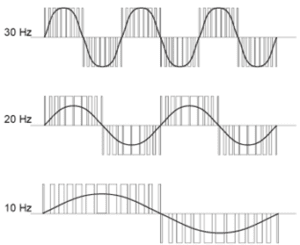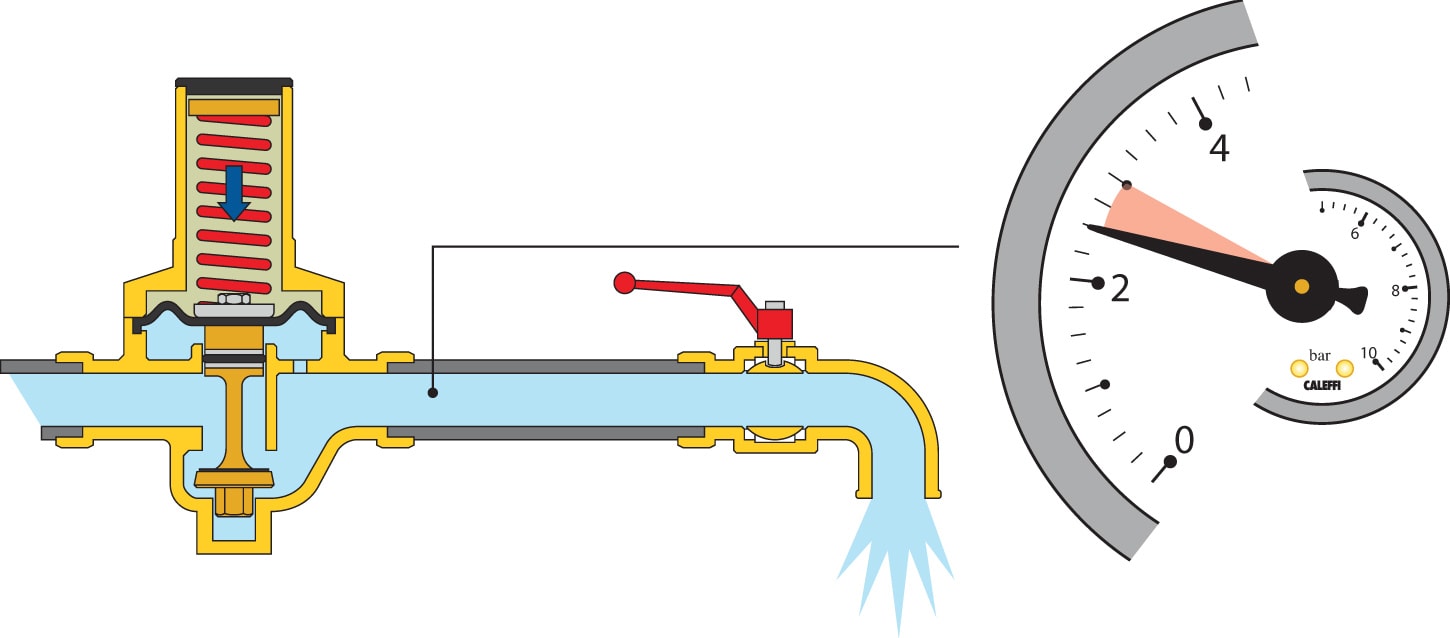
Layered efficiency in Booster Pumps from DAB

DAB Water Technology are global leaders in technology for the movement and management of our most precious resource, water. h2x has partnered with DAB in Australia and New Zealand so that our users can design with DAB pumps. The team at DAB have shared this technical article to benefit h2x’s audience of engineers.
An Introduction to Variable Frequency Drives, Permanent Magnetic Motors and Operation Mode within Booster Sets.
Pumps are an essential component in many industries, including water and wastewater treatment, agriculture, and manufacturing. Booster pumps play a crucial role in these industries, as they help maintain the desired pressure levels in pipelines and systems.
With the advent of technology, the use of variable frequency drives (VFDs) has become the standard in booster pump applications, providing numerous benefits and improved efficiency. In this article, we will explore the concept of VFDs and how they are used with booster pumps, focusing on their advantages and efficiency.
Suggested reading: Read our article, Booster Pumps to learn more about designing and sizing Booster Pumps.
What are Variable Frequency Drives?
A VFD is an electronic device that adjusts the speed of an electric motor. When used with water pumps they provide precise control over the flow of water in a pipeline or system.
By adjusting the frequency of the electric supply, the VFD adjusts the speed of the motor and thus the flow rate of water. The use of VFDs results in a more energy-efficient pumping system, reducing energy consumption and the associated costs.
The use of VFDs also improves the life of the booster pump, as it reduces the stress on the motor and hydraulic components.
It is estimated that up to 90% of the life cycle cost of the pump is energy consumption, so improving efficiency is primary when considering total life cycle costs.
Benefits of Using a VFD:
· Energy Savings: The use of VFDs can result in energy savings of up to 30% compared to traditional fixed-speed pumping systems.
· Energy Efficiency: VFDs help reduce energy consumption by adjusting the speed of the motor to match the flow demand, resulting in significant energy savings.
· Improved System Control: VFDs provide precise control over the system, allowing for a more consistent and efficient pumping system.
· Extended Life of Equipment: VFDs reduce the stress on the motor and other components, improving the overall life of the equipment.
· Easy Maintenance: VFDs provide detailed information about the performance of the system, making maintenance easier and more efficient.
What is a VFD:
· A VFD is an AC drive that converts incoming AC power into DC power and then back into AC power at the desired frequency, adjusting the speed of the motor.
· VFDs use PWM (Pulse Width Modulation) to control the frequency of the electric supply, resulting in precise control over the speed of the motor.
· The difference between the synchronous speed of a motor and its actual speed is known as slip. VFDs adjust the frequency of the electric supply, reducing the slip and improving the efficiency of the system.
Understanding the technical aspects of VFDs and their benefits, helps engineers make informed decisions about the use of VFDs in their projects. Below is an example of a VFD using Pulse Width Modulation to vary the speed.
To further improve the efficiency of a pump, the introduction of Permanent Magnetic Motors takes energy-saving one step further:
What is a Permanent magnet motor?
· Permanent magnetic motors (PMMs) are a type of motor that uses magnets instead of wound coils to create the magnetic field.
· PMMs are known for their high efficiency, low energy consumption, and improved performance compared to traditional asynchronous motors.
Asynchronous vs Synchronous Motors:
· Asynchronous Motors: Asynchronous motors, also known as induction motors, are the most common type of motor used in pumping applications. They work by inducing an electromotive force in the rotor, which in turn generates the torque needed to drive the pump.
· Synchronous Motors: Synchronous motors, on the other hand, work by using permanent magnets to create a magnetic field that rotates in sync with the magnetic field of the stator. This results in improved efficiency and performance compared to asynchronous motors.
An understanding of the benefits of PMMs in pumps and the difference between asynchronous and synchronous motors will help engineers make informed decisions about the use of PMMs in their projects.
Benefits of PMMs in Pumps:
· Improved Efficiency: PMMs are known for their high efficiency, which can result in energy savings of up to 20% compared to traditional asynchronous motors.
· Improved Performance: PMMs offer improved performance compared to asynchronous motors, providing more precise control over the speed of the motor.
· Reduced Energy Consumption: The use of PMMs results in lower energy consumption compared to asynchronous motors, reducing energy costs and helping to conserve resources.
Correctly orientating the booster set is another factor in increasing system life and creating efficiency.
Types of Booster Sets:
· Duty Mode: In duty mode, the booster pump operates continuously, providing the necessary pressure for the system.
· Standby Mode: In standby mode, the booster pump operates only when the demand exceeds the capacity of the primary pump.
· Assist Mode: In assist mode, the booster pump operates in conjunction with the primary pump, providing additional pressure when required.
Benefits of Standby on a multi-pump booster:
· Having a backup in case of primary breakdown means the system is always online at the desired capacity.
· Sharing the full duty means lower running hours for each pump, increasing pump longevity.
· The ability to increase performance if extra demand is required.
When selecting a cold water booster system, consulting engineers need to consider factors such as flow rate requirements, system pressure, and energy efficiency.
The DAB ESYBOX MAX is a popular choice as it is compact, due to its fully integrated nature and modular design, is energy-efficient, since it has an integrated VFD, PMM and efficient hydraulics, and provides full system functionality and connectivity, giving precise control over the system, both locally and when completely remote.
Depending on the number of pumps in the required booster set, the ESYBOX MAX can also operate in either Duty, Standby or Assist modes according to the specification.
Design with DAB Products
h2x has collaborated with DAB so that customers in Australia and New Zealand can design using DAB’s product range.
When users add a booster pump, h2x will calculate the required pump duty:
Flow Rate – calculated by the number of fixtures/nodes connected to the pump
Pressure – calculated by meeting the ‘Minimum Inlet Pressure’ at every fixture/node
Then, based on the configuration that you select, H2X will provide the relevant DAB pump model to suit your project.
As shown in the image below, a ‘Duty/Standby’ pump which requires a flow rate of 1.484 L/s and an extra 353 kPa of pressure will specify the relevant DAB Configuration – 2 x ESYBOX MAX 60/120
DAB & h2x Product Integration
Watch the video below to learn how the DAB product integration works in h2x.
Calculation software that empowers engineers
h2x is a plumbing system design software built to ensure compliance, efficiency, accuracy and collaboration.
Its straightforward user interface helps engineers produce high-quality designs and work more efficiently, all while adhering to industry regulations.
The software has already been used to size millions of kilometres of pipes in projects across the world.
Book a demo with us today to discover how H2X can help you improve your design and calculation workflow.
h2x: All-In-One Tool for Calculating, Designing, Estimating, and Paperwork

What's in the Pipeline?
Get access to our monthly roundup of news and insights
You may unsubscribe from these communications at any time. For more information, please review our Privacy Policy.
Testimonials
What Installers Say
What Consultants Say
A game changer for the humble plumber. Incredible.
Brad Winkel
Director at Queenstown Plumbing
Brilliant, simple and easy to use. Game changer.
James Major
Director at Hubb
Big time game changer to the industry!
Viv Jude
Director at UHC
Incredible software! Super user-friendly and allows you to save so much time.
Devni Gamage
Engineer at DMA
h2x is great software, our company use it nearly every day. It is easy to use with direct conversion from h2x to Revit.
Callum Craig
Engineer at WDE
h2x is fantastic software. It is very easy to use and the ability to output to Revit is a fantastic time saver.
Joe Kirrane
Engineer at MEP















